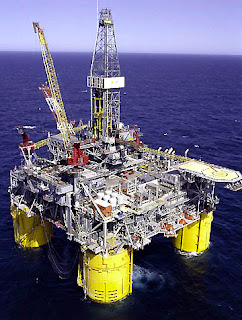Keeping the pressure of an oil or gas rig under control is
of paramount importance. Too little pressure and the well may not function
correctly, too much pressure and there could be an expensive and dangerous
blowout. The wellhead is present to keep the pressure of a production well
under control. The wellhead performs this task using a series of valves, spools
and adapters, and is situated at the terminal of the wellbore, usually above
ground at surface level, welded to the casing strings that stretch far below
ground. It provides facilities for casing and tubing hangers, as well as
fittings for the Christmas tree and flow control devices.
Due the very dangerous nature of drilling for oil both in
terms of the safety of the oil rig workers, and the impact a blowout could have
on the environment, production of wellhead components is strictly regulated and
each part is tested for potential failure at a microscopic level. There are
regulations that must be complied to and these are API 6A Specification for
Wellhead and Christmas Tree Equipment and ISO10423 Wellhead and Christmas Tree
Equipment. Quality control is the key to the manufacturer of wellhead
components, down to the last bolt and nipple. The components must be very
strong and must withstand very high pressure levels. Testing in the factories
where wellhead components are produced is rigorous. A complete radiographic
examination of each part can help expose weaknesses in the casings before they
become part of a working wellhead and cause an incident to occur.
Once in place, parts must be checked regularly and replaced
when worn. Although wellhead components are manufactured to the highest
standards, and much research has gone into creating components for wellheads
that will suffer the minimum amount of wear and tear, sometimes there are
crevices within the components that simply must be there for the structural
integrity of the wellhead as a whole, but that can suffer from corrosion and
erosion. A close eye must be kept on any parts that are known to be susceptible
to corrosion. They must be checked regularly and the wellhead must be
maintained to ensure safety, and continued production.
Many drilling companies will employ maintenance companies to
look after their wellheads, performing all the maintenance and repair duties
expertly. These professionals generally work solely on wellhead components, so
they literally know the wellhead inside out. Regular maintenance will help keep
the components in good working order for longer, so it can be a good money
saving exercise too, as well as ensuring the well is safe. Parts may need to be
replaced or repaired. A maintenance crew will either repair components on site
or will take them away to their own facilities to be repaired.
For more information on any of the above please visit our website today.

